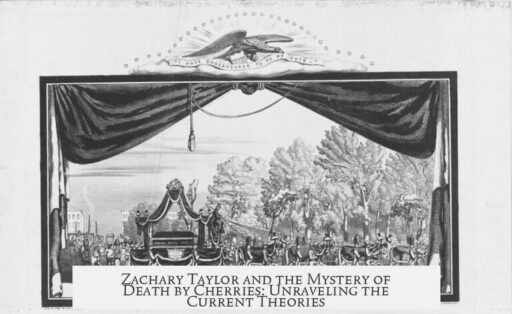U.S. President Zachary Taylor’s death has long been linked to a so-called “surfeit of cherries,” but the current understanding of his cause of death points to a foodborne infection rather than simply eating too many cherries. Historical records describe Taylor suffering from a digestive illness labeled “cholera morbus,” a vague 19th-century term for intestinal distress rather than the cholera caused specifically by Vibrio cholerae bacteria. Modern scholarship suggests that contaminated food or drink, possibly including cherries or the ice used to chill milk he consumed, led to a fatal infection.
Fruits like cherries can carry bacteria if exposed to unclean water. This creates a risk for diseases transmitted via contaminated food. The Centers for Disease Control and Prevention (CDC) advises peeling fruits and vegetables as a measure to avoid such infections, illustrating how fruits can be vectors for bacteria, including those causing cholera in some cases.
It is important to distinguish between the two meanings of “cholera.” The current disease known as cholera is a severe intestinal infection caused by the specific bacterium Vibrio cholerae. This disease only spread widely outside the Indian subcontinent in the early 1800s. Taylor’s illness was classified as “cholera morbus,” a term used in his time to describe general gastroenteritis or intestinal illnesses, not confirmed cholera as understood today.
Medical accounts from Taylor’s era mention no specific culprit food but report that he developed severe digestive symptoms after consuming cherries and milk, possibly chilled with ice. Historians and medical experts today infer that the food or drink was contaminated with bacteria or viruses leading to gastroenteritis, causing dehydration and complications that resulted in his death. The quantity of cherries or their acidity overwhelming his digestive system is unlikely to have caused death directly.
The myth that Taylor died from eating an excessive quantity of cherries gained traction partly because of incomplete medical knowledge at the time and the lack of specific diagnoses. Detailed autopsy data is scarce, and although President Taylor’s body was exhumed in the 20th century for arsenic testing, no conclusive evidence attributed his death to poisoning or cherry overconsumption.
Improved sanitation and food safety practices today reduce risks from contaminated food, preventing outbreaks of illnesses once common. The enhanced understanding of diseases and refined medical diagnostics also clarify the causes of death that, in the past, were broadly labeled with terms like “cholera morbus.” In less developed regions or earlier times, vague terminology was common and often led to myths filling gaps in understanding.
| Aspect | Historical View | Modern Understanding |
|---|---|---|
| Term “Cholera” | Used broadly to mean digestive illness (“cholera morbus”) | Refers to intestinal infection caused by Vibrio cholerae |
| Cause of Death | Attributed to overconsumption of cherries | Likely bacterial or viral gastroenteritis from contaminated food/drink |
| Food Safety | Little understanding, risk from contaminated food common | Improved sanitation and peeling reduce risk of infection |
The main takeaways on the cause of Taylor’s death and the “surfeit of cherries” myth include:
- President Taylor’s death was due to a digestive infection, historically called “cholera morbus,” not the cholera disease known today.
- Contaminated cherries or other food items, possibly including ice or milk, were likely sources of bacteria or viruses causing gastroenteritis.
- The claim that eating too many cherries directly caused death is a popular rumor without strong medical evidence.
- Advances in sanitation, food safety, and medical diagnosis have largely eliminated such infections in modern settings.
- Historical medical terminology was vague, creating room for myths to persist over time.
For detailed, science-based insight into this topic, official resources like the CDC and medical history analyses provide authoritative information. Understanding the distinction between different uses of “cholera” clarifies misconceptions surrounding Taylor’s death and the risks associated with fruit consumption in the 19th century.



